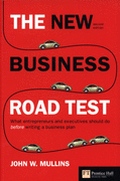People sometimes ask me how to learn to code.
I always recommend solving a real problem for real people, because it forces you to learn whatever is needed to solve that problem.
That is, after all, what coding is – the commitment to learn whatever is needed to solve problems (because almost every new problem requires learning some new coding library, strategy, skill, etc.).
In my opinion a ‘coder’ is someone who has the confidence take on any coding-related problem in the knowledge that they can learn whatever is required to solve it.
Put another way, I’m saying that learning another skill isn’t what makes you a coder – what makes you a coder is accepting that you need to continually learn new coding skills.
So don’t focus on acquiring skills as a goal in and of itself. Instead, have confidence that you can learn as you go and, therefore, start solving real problems for real people right now.
Start with small problems and work your way up over time.


